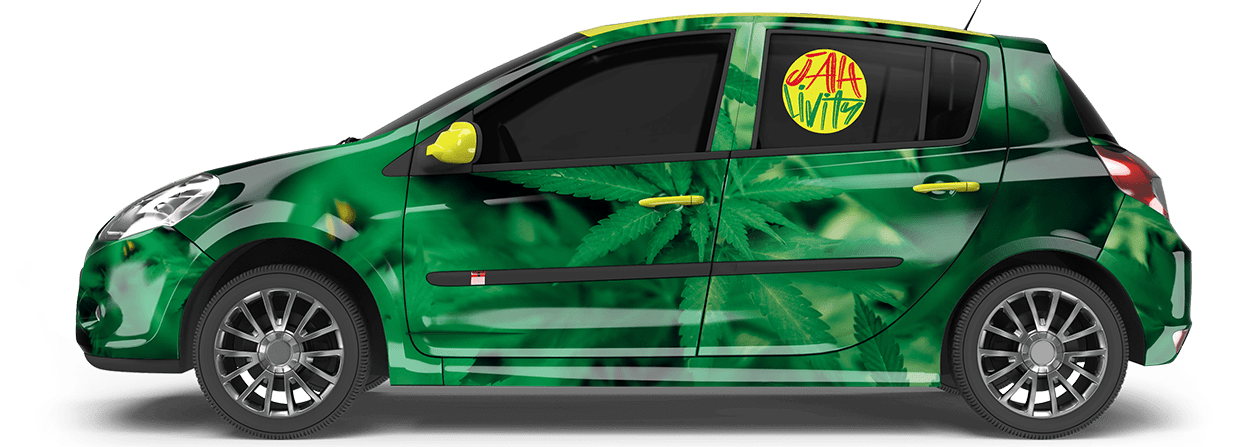Visitors to Jamaica come fi di stunning beaches, di warm people, an’ sometimes, di sacred herb. But there’s another part of Jamaica dat has blossomed into a worldwide phenomenon—Rastafari. It’s one of di world’s youngest religions, but don’t let dat fool you! In just a few decades, Rasta culture has made its mark as a spiritual, cultural, and political force. Beyond di dreadlocks, reggae beats, an’ ganja, there’s a rich history that tells di story of a people seeking liberation, unity, an’ empowerment.
So grab yuh ital food (no meat, no salt, just pure vibes—no worries, mi joking!), sit back, an’ join us on a journey through di roots of Rastafari. From Marcus Garvey’s vision to Bob Marley’s music, let’s explore how a small Jamaican movement became a worldwide symbol of freedom an’ “one love.”
Marcus Garvey: Di Prophet with a Plan (an’ a Mighty Beard)
Before Bob Marley strummed his guitar an’ Haile Selassie I ruled Ethiopia, there was Marcus Garvey, di man with a grand vision. And what a vision it was! Garvey wasn’t just any man with big ideas—he was a Jamaican political leader, entrepreneur, an’ true visionary. In di 1920s, he founded di Universal Negro Improvement Association (UNIA), a movement aimed at uniting people of African descent across di world. His message? “We are powerful an’ need to reclaim our heritage an’ dignity as African people.”
Garvey famously said, “Look to Africa, where a Black king shall be crowned.” Now, mi tell yuh, most of us chat big after a few drinks, but Garvey wasn’t playing. To di early Rastas, Garvey’s words sounded like prophecy, an’ when Ras Tafari Makonnen was crowned Haile Selassie I in Ethiopia in 1930, dey believed di prophecy was fulfilled. This historic moment sparked a movement rooted in pride, resilience, and di call for African unity. Garvey’s call to action laid di groundwork for Rastafari’s vision of “one love” an’ empowerment.
Haile Selassie I: Di Emperor Who Became God (Surprise!)
Let’s talk ‘bout Haile Selassie I. Before di crown, he was just Ras Tafari, di Prince of Ethiopia. But when he became emperor, things shifted. Di Rastafarians saw him as Jah, di living God, sent to free di people from Babylon (not di ancient city, but a metaphor for Western oppression an’ materialism). Haile Selassie didn’t claim to be divine, but Rastas saw him as their King of Kings, di Lion of Judah, di embodiment of Black power an’ pride.
For Rastafarians, Selassie represented a kind of freedom an’ resistance. He was di ruler of Ethiopia, one of di only African nations never colonized, which only added to his status as a symbol of liberation. Selassie became di heart of Rastafarian beliefs, embodying both spiritual an’ cultural pride for people of African descent worldwide.
Rastafarian Beliefs: Dreadlocks, Ital Living, an’ Rejecting Babylon
As di movement grew, so did di unique beliefs of Rastafari. Here are some basics:
Dreadlocks: Ever wonder why Rastas rock dem long locks? Dreadlocks are more than just a hairstyle—they symbolize strength, resistance, an’ spirituality, reflecting di Lion of Judah an’ pride in African heritage.
Ital Living: Rastas believe in living naturally, eating a diet dat’s organic, unprocessed, an’ often plant-based. Di ital lifestyle avoids processed foods an’ meat, focusing on staying pure an’ connected to nature. It’s all ‘bout “livity”—living as naturally an’ peacefully as possible.
Babylon: Di Rastafarians see Babylon as everything dat’s corrupt, materialistic, an’ oppressive in di world. Di Rasta mission is to stand firm against Babylon an’ live in harmony with Jah (God), nature, an’ community.
Reggae Music: Di Soundtrack of Di Revolution
Rastafari might have stayed a Jamaican thing if it wasn’t for reggae music. And who better to lead di charge than Bob Marley, di king of reggae an’ proud Rasta? Marley’s songs didn’t just make people dance—they made people think. His lyrics talked about African unity, love, an’ spiritual awakening, spreading di Rastafarian message all over di globe. When you hear “Redemption Song,” dat’s Marley doing his Rasta thing, calling for liberation an’ empowerment.
With Marley, reggae became di voice of di Rasta movement, reaching people from di Caribbean to Africa to di US. His image—dreadlocks, guitar, an’ easy smile—became a symbol of hope, freedom, an’ resistance. Thanks to Marley, reggae an’ Rastafari spread across di world like wildfire, giving Rasta culture a global platform.
Ganja: Di Sacred Herb
No journey through Rastafari would be complete without mentioning ganja, or di sacred herb. For Rastas, ganja is not just about relaxation—it’s a sacrament, used to meditate, connect with Jah, an’ seek inner peace. Ganja plays a spiritual role in Rastafarian rituals, helping them reach a higher state of consciousness.
And if yuh in Negril an’ want to experience di sacred herb Rasta-style, Jah Livity has got yuh covered. We offer sacramental ganja from local Rastafarian farms, delivered right to yuh spot in Negril, so you can relax an’ enjoy di vibes! It’s ganja with purpose, connecting yuh not only to di herb but to di Rasta mission of livity, unity, an’ respect for di earth.
Rastafari Today: Still Irie, Still Evolving
Today, Rastafarianism is alive an’ well, adapting to di times while staying true to its roots. Whether in Jamaica or di African diaspora in di Americas, Europe, an’ beyond, Rastas continue to practice their faith with spirituality, resistance, an’ respect for nature. Di world has changed, but one t’ing’s for sure—Rastafarianism isn’t going anywhere. Di message of unity, love, an’ freedom still resonates globally, now more than ever in a world looking for peace an’ purpose.
So, whether yuh a die-hard reggae fan or just curious about di world of Rastafari, there’s always more to learn, an’ di journey is as irie as it gets!
